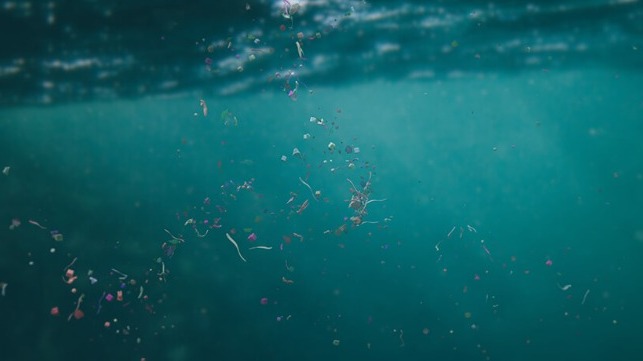Ocean Waves Put Microplastics Back in the Air

A team of researchers at Cornell University and Princeton have shown that the ocean can expel microplastics into the air in droplets when waves break, and the sea could be sending as much as 100,000 tonnes of ultrafine plastic particles airborne every year.
An estimated 20 million tonnes of plastic enter the ocean each year. Larger plastic waste breaks down slowly over time into microscopic pieces - microplastics - which can be found throughout the sea and in the creatures that inhabit it. Other microplastic arrives in the ocean already broken down, like the synthetic rubber dust shed by automotive tires.
The ocean is widely assumed to be the final destination for microplastic once it arrives, whether in the water column, within the ocean food chain or deposited on the seabed. But the ocean's surface can also put microplastic particles back into the air, according to a study led by Princeton doctoral student Daniel Shaw.
Breaking waves and bubbles expel sea spray from the surface, and this is a constant source of atmospheric particulate matter. For ships and coastal communities, the airborne salt crystals from sea spray are a familiar accelerator of corrosion. Aerosols from sea spray are also an important factor in cloud formation, as they provide nuclei to promote condensation.
Up until the plastics revolution of the last century, sea spray contained just salt and organic matter, but today the water also contains microplastics. To determine whether and how much microplastic can be expelled when wave action creates bubbles, Shaw's team set up a simple experiment. They added microscopic plastic and glass particles into a tank of water, then set up high-speed cameras aimed at the surface. While recording, they used a syringe to make bubbles in the water. The drops flung upwards by the bursting bubbles - known as jet drops - were captured on video, and the contents of the drops were counted. Some drops contained over 100 pieces of microplastic.

that matters most
Get the latest maritime news delivered to your inbox daily.
The team started out with a high concentration of plastic particles in order to demonstrate the phenomenon. In order to make an estimate of what emissions look like from the whole ocean, they combined microplastic concentration estimates with wave-action data to produce a global chart. The findings revealed two hotspots - one spanning the Pacific from Hawaii to Okinawa and another across the southern Indian Ocean, from Australia to South Africa. Lesser coastal concentrations were found in the Eastern Mediterranean and the Bay of Bengal.
Based on available data, the ocean's total airborne plastic emissions could range anywhere from 20,000 tonnes per year to as much as 7.4 million tonnes per year, they estimated. The team suspects that the best guess is in the range of 100,000 tonnes per year - though better data on real-world microplastic levels would be needed to know for sure.
